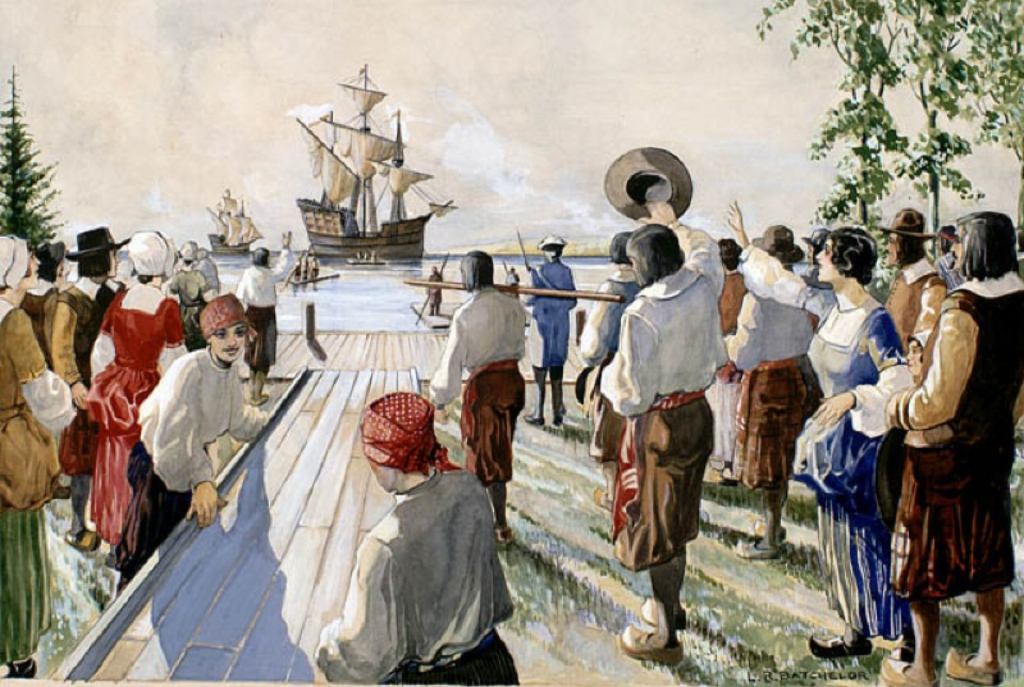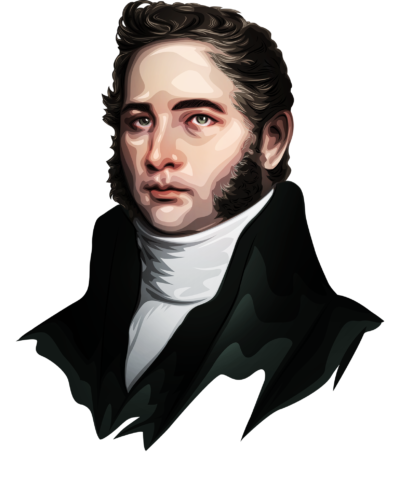The brave ones
Gilles Trottier and Catherine Loyseau
A couple who sacrificed everything for their children


Gilles Trottier and Catherine Loyseau were among the French peasants who chose to move to New France with their family. They were a rare example.
A lot rarer than you might think.
DREAMING OF A BETTER FUTURE
Gilles Trottier and Catherine Loyseau were born in the province of Perche, known for its land clearers. They grew up dirt poor.
They married around 1628 and their first son, Gilles, was born that same year. Life was tough for peasants at that time. They coped the best they could with poor harvests, epidemics, wars and high taxes levied by the King.

The Milkmaid’s Family. Louis Le Nain, ca. 1641.

View of Trois-Rivières, from the British Magazine. British Magazine, 1760.
A first solo voyage
In 1640, Gilles signed up for a three-year period. Volunteers had to prove their ability to withstand the harsh environment and live together with the Indigenous Peoples on the New Continent.
He was given a plot of land at Coteau Sainte-Geneviève, near Quebec City, which he had to rapidly clear and cultivate for Pierre Le Gardeur de Repentigny.

Louis Hébert Sowing. Georges Latour, ca. 1918.

Arrival of Ships from France, 1660. Lawrence R. Batchelor, ca. 1931.
A CAREFULLY WEIGHED DECISION
The father returned to France in 1643 with the firm intention of bringing his wife and children back to the colony. However, they only departed three years later—that was how long it took him to convince his wife!
Before signing up with his wife and children, Gilles was given a farming lease drawn up by Pierre Le Gardeur de Repentigny. In agreeing to the contract, he pledged to maintain and cultivate the tenant farm at Portneuf for a period of seven years, with the help of his sons.

Louis Hébert, First Settler. Jean Baptiste Lagacé, ca. 1921-1933.
SETTING OUT
In mid-July 1646, the Trottier couple and their four sons aged 2 to 18 years embarked on the Cardinal at La Rochelle to cross the Atlantic to North America. Catherine, pregnant and 50 years old at the time, gave birth to her fifth son during the crossing. They named him Jean-Baptiste and he was baptized on September 27, 1646, four days after the Cardinal berthed. Those folks from Perche were a tough bunch!

The Port of La Rochelle in the 18th century. Balthasar Friedrich Leizel.

The Wreck of the Concepcion. Robert E. McGinnis, n.d.
A BROKEN DREAM
The Trottier family was soon put to the test. Clearing land was one thing, but warding off attacks was quite another. After successive Iroquois raids, the family had had enough.

L'Angélus. Jean-François Millet, ca. 1857-1859.
Two years after their arrival, they escaped Portneuf and followed Jacques Le Neuf de la Poterie to the city of Trois-Rivières, where he was governor.
There they lived modest lives. Gilles Trottier wore himself out doing odd jobs for everyone. He was eventually granted a plot of land in 1650, but had a hard time cultivating it because of Iroquois attacks against Trois-Rivières.

Massacre and Fire at Lachine, 1689. M. Easton, ca. 1925-1950.
PASSING ON THEIR COURAGE
Two years later, Gilles sold half of his small property and moved to Cap-de-la-Madeleine, where the Jesuits had granted him a plot of land.
Gilles Trottier died in Cap-de-la-Madeleine on May 10, 1655, at the age of 65. Catherine Loyseau died the following year, on January 28. She was 60 years old. After a life divided between hope and hardship, they left to their five sons a piece of land and the keys to a country to be explored.

Monseigneur de Laval. Jean-Baptiste Lagacé, ca. 1921-1933.
The sons also inherited their parents’ iron will and passionate love for the New Continent.

Back then, it was rare for an entire family, like the Trottiers, to cross the Atlantic in search of prosperity. Life in America was tougher than they had imagined, but the family team stayed strong, against all odds.
























